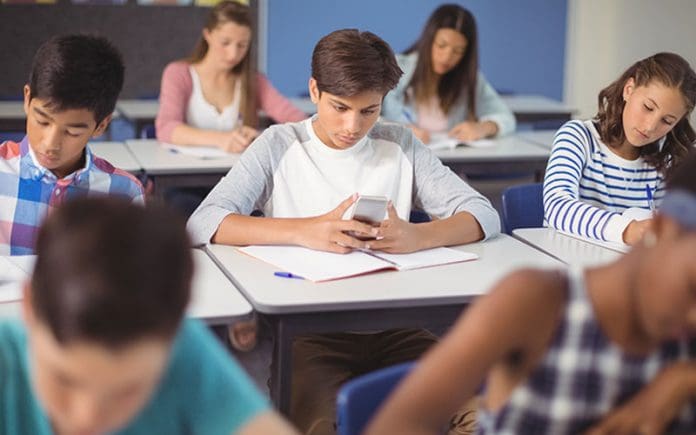In the age of digital innovation, mobile devices have become ubiquitous, transforming the way we communicate, access information, and learn. While these technological advancements bring undeniable benefits, the increasing prevalence of mobile devices in schools has sparked debates about their impact on students. The following shines a light on the use of mobile devices in the classroom and explores how they influence students both positively and negatively.
The Positive Side:
- Enhanced Learning Opportunities: Mobile devices offer students access to a vast wealth of information at their fingertips. Educational apps, e-books, and online resources enable students to explore subjects in greater depth, fostering a more interactive and engaging learning experience.
- Digital Collaboration: Mobile devices facilitate collaborative learning, allowing students to work together on projects, share ideas, and communicate effectively. This collaborative environment prepares them for the teamwork skills required in the modern workforce.
- Personalized Learning: With the help of educational apps and adaptive learning platforms, students can receive personalized instruction based on their individual learning styles and progress. This tailoring of education can contribute to better academic outcomes.
- Increased Productivity: Mobile devices can enhance students’ organizational skills with features such as calendars, reminders, and note-taking apps. These tools can help students manage their time effectively and stay on top of assignments and deadlines.
The Negative Impact:
- Distraction and Lack of Focus: One of the most significant concerns surrounding mobile devices in schools is the potential for distraction. Students may be tempted to engage in non-educational activities such as social media, gaming, or messaging, diverting their attention away from classroom instruction.
- Digital Addiction: Excessive use of mobile devices can contribute to digital addiction, leading to decreased face-to-face interactions and physical activities. This addiction may impact students’ mental health and well-being.
- Cyberbullying and Social Pressures: The constant connectivity afforded by mobile devices can expose students to cyberbullying and social pressures, both inside and outside the classroom. The prevalence of social media can contribute to feelings of inadequacy, anxiety, and peer pressure.
- Inequality in Access: Not all students have equal access to mobile devices and the internet, leading to a potential digital divide. This discrepancy in access can exacerbate existing educational inequalities, putting some students at a disadvantage.
Conclusion:
The impact of mobile devices on students in the classroom is a complex and multifaceted issue. While these devices provide invaluable learning opportunities and foster essential skills for the digital age, the potential for distraction, digital addiction, and social pressures cannot be overlooked. Striking a balance between leveraging the positive aspects of mobile technology and mitigating its negative consequences is crucial for creating a conducive learning environment. Educators, parents, and policymakers must work collaboratively to establish guidelines that harness the benefits of mobile devices while addressing their challenges, ensuring that students are equipped with the skills needed to thrive in an increasingly digital world.






